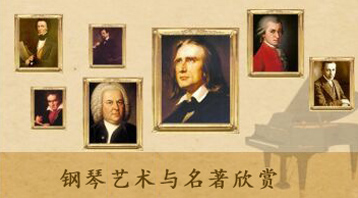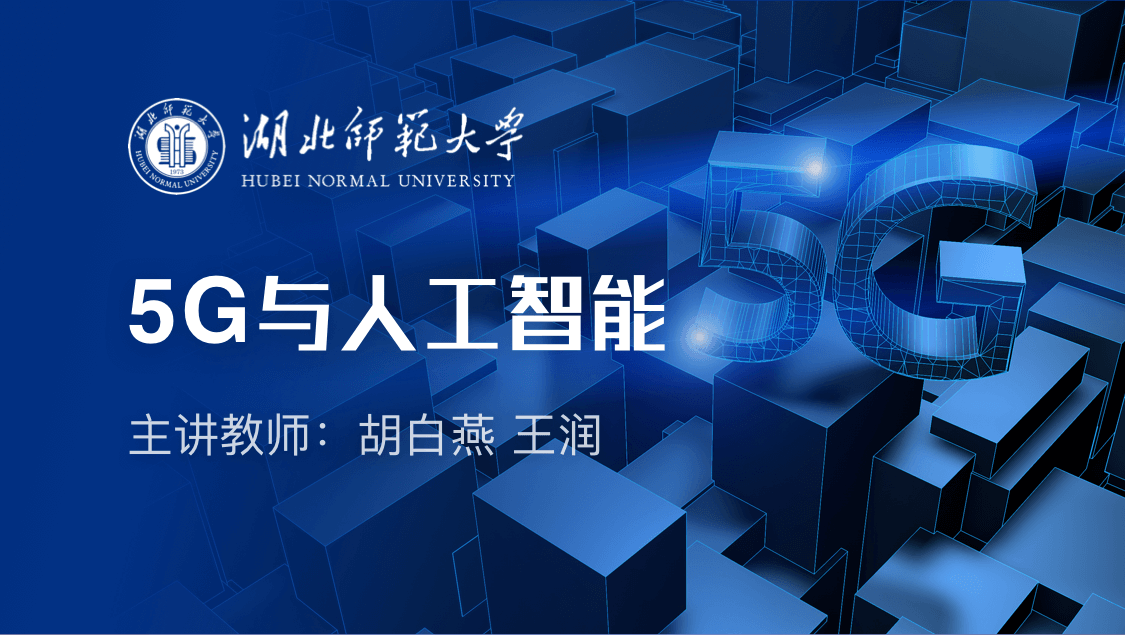
当前课程知识点:Five Disciplines of Management Quality and Ability —— Follow Me to Learn Management > The Fourth Discipline: Staffing, Effective Motivation > 4.5 Process-based Incentive theory: Expectation Theory and Fairness Theory > 4.5 Process-based Incentive theory: Expectation Theory and Fairness Theory
返回《Five Disciplines of Management Quality and Ability —— Follow Me to Learn Management》慕课在线视频课程列表
返回《Five Disciplines of Management Quality and Ability —— Follow Me to Learn Management》慕课在线视频列表
大家好
在进入这次课程之前
我们先来 想一想
小李年初进入一家外资企业工作
公司实行的是谈判工资
员工工资只有自己知道
对其他人保密
小李对这份工作很满意
工作虽累却挺舒心
一方面公司人际关系和谐
另一方面每月6000元的收入也不错
如果干得好 年底还有加薪的机会
小李一门心思扑到了工作上
经常加班加点 希望年底能够加薪
年底考核时
公司领导对小李的工作给以了高度评价
并给他加薪到每月6900元
年初同时进入公司的小秦
却开心不起来
因为他今年的业绩一般
年底没有得到加薪的机会
有一天下班后 两人在一起喝了点酒
两人聊起了公司年底加薪的事
小秦唉声叹气地说
你今年可真不错 不像我这么倒霉
到年底没有加一分钱
干来干去还是年初的6900块钱
猛然间小李感到非常不公平
请大家想一想
小李为什么感到不公平
他以后的工作表现将会怎样
请带着你的思考
我们一起来聊一聊过程型激励理论中
非常有影响的 期望理论 和 公平理论
期望理论 是由心理学家和行为科学家
弗鲁姆于1964年提出来的
弗鲁姆认为
人的工作积极性既与目标价值密切相关
也与实现目标的可能性密切相关
他提出一个公式
激励力量=期望值×效价
什么是期望值呢
期望值是指个人根据以往的经验
对某一行为达成目标的可能性
大小的估计和判断
如果估计通过努力
能够达成目标 期望值就高
否则 这个期望值就很低
这是一种主观判断的可能性
不同的人对同样工作完成的可能性
的判断是不一样的
同样一件工作
有的人觉得这件工作对他来说很简单
很轻松就可以完成
那么他的这个期望值就很大
而对于另外一个人来说
他可能觉得对于他来说
完成的可能性比较低
那么他的这个期望值就很低
什么是效价呢
效价就是个人对于目标实现后
所能够获得的相应报酬的价值大小
效价同样是一种的主观判断
同样的报酬
对于某个人来说可能有很大的吸引力
具有很高的效价
但对于另外一个人
可能并没有什么吸引力
效价并不高
激励力量的大小取决于
个人实现某项目标的效价
同时取决于他对实现这个目标的期望值
如果期望值很高 但是效价很低
则不会形成有效的激励力量
如果期望值很低 效价很高
也不会形成有效的激励力量
只有当目标的效价和实现目标的期望值
都处在一个较高水平的时候
才有可能产生较大的激励力量
接下来
我们来了解另外一种有影响的过程型激励理论
公平理论
公平理论 是由美国心理学家
亚当斯于1965年提出来的
该理论认为
每个人都会把自己付出的劳动和所得到的报酬
同他人付出的劳动和所的到报酬
来进行一个横向的社会比较
同时 也会把自己现在付出的
劳动和所得的报酬
同自己过去所付出的劳动和所得到的报酬
进行一个纵向的历史比较
比较的结果有三种情况
第一种情况是认为自己的比值或现在的比值
比别人或过去要低
员工就会认为这是不公平的
会有一种吃亏的感觉
第二种情况是自己的比值或现在的比值
同别人或过去的比值等当
员工就会认为这是公平的
这个时候他就会产生一种平衡的心理
第三种情况是自己的比值或现在的比值
比别人或过去的比值大
这也是不公平的
这个时候员工心里会有短暂的负疚感
并有可能影响到其他人的工作积极性
我们说
只有当员工觉得自己受到公平待遇的时候
他才可能会因此而保持工作的积极性
而当员工产生不公平感的时候
员工就会采取一些消极的方式来改变不公平
最常见的方式就是
减少自己在工作中的努力程度
因此 对于管理者来说
我们需要尽可能消除实际工作绩效
与报酬之间的不合理性
要尽量做到公正透明
以避免员工产生不公平的感觉
这里 我想同大家分享一个案例
有一位艺术家为了安静地创作
特意在郊区购买了一栋平房
平房前面有一棵大树
居住环境十分好
但是搬进新家后不久 他才发现
原以为安静的平房并不安静
每天小学生放学后
很多的小孩都会聚集到平房前面
这棵大树下面唱歌
这位艺术家的创作思路受到很大影响
如何解决这个问题呢
很多人可能会提出来
可以去赶跑这些小朋友
或者干脆挪走这棵大树
其实这些做法都是不现实的
这位艺术家想了一个办法
他告诉这些小朋友
他特别喜欢小朋友唱歌
准备出钱请他们每天都过来唱歌
第一天给了每个小朋友5块钱的报酬
第二天他却只给了每个小朋友2块钱的报酬
这时 相当一部分小朋友认为非常不公平
觉得自己与昨天是同样的付出
回报却变少了 就回家了
到了第三天 艺术家不再给小朋友钱了
剩下的那些小朋友也无法忍受这种不公平
就基本上都会回家了
这位艺术家其实是在巧妙地运用公平理论
解决他自己的苦恼
由于他用金钱来回报小朋友的唱歌
当他不再给小朋友付钱时
小朋友会觉得自己认真的付出
并没有得到应有的回报
感觉自己受到了不公平的对待
于是决定放弃付出
也就是不再过来唱歌了
现在 让我们回到本堂课开始前的 想一想
小李他为什么感到不公平
他以后的工作表现将会怎样
很显然
小李就在将自己的报酬和工作投入的比值
与小秦进行比较后
内心产生了不公平感
根据亚当斯的公平理论
小李今后的工作积极性肯定会受到影响
并且很有可能会辞职
因此 我经常对很多搞管理的同志说
激励并不取决于绝对值
而取决于你对你员工所实施的激励
在他内心的感知度 这个是最重要的
学以致用 在课程结束前
我给大家留一个思考题 请大家 用一用
请大家思考一下
应该如何避免 谈判工资 模式的一些缺陷
关于思考题
我们会在课程的互动讨论区同大家一起讨论
并给出我们的观点
好 这次课就到这里 我们下次课见
-0.1 What is Management: The Secret of Management is to Borrow Resources
--0.1 What is Management: The Secret of Management is to Borrow Resources
--0.1 What is Management: The Secret of Management is to Borrow Resources
--0.1 What is Management: The Secret of Management is to Borrow Resources
-0.2 Natural Attribute and Social Attribute of Management
--0.2 Natural Attribute and Social Attribute of Management
--0.2 Natural Attribute and Social Attribute of Management
--0.2 Natural Attribute and Social Attribute of Management
-0.3 The Scientificity and Artistry of Management
--0.3 The Scientificity and Artistry of Management
--0.3 The Scientificity and Artistry of Management
--0.3 The Scientificity and Artistry of Management
-0.4 Management Functions, Skills and Roles
--0.4 Management Functions, Skills and Roles
--0.4 Management Functions, Skills and Roles
--0.4 Management Functions, Skills and Roles
-0.5 Case Study: Personal Excellence Doesn’t Mean Much
--0.5 Case Study: Personal Excellence Doesn’t Mean Much
--0.5 Case Study: Personal Excellence Doesn’t Mean Much
--0.5 Case Study: Personal Excellence Doesn’t Mean Much
-0.6 Centennial Management Context (Ⅰ)
--0.6 Centennial Management Context (Ⅰ)
--0.6 Centennial Management Context (Ⅰ)
--0.6 Centennial Management Context (Ⅰ)
-0.7 Centennial Management Context (Ⅱ)
--0.7 Centennial Management Context (Ⅱ)
--0.7 Centennial Management Context (Ⅱ)
--0.7 Centennial Management Context (Ⅱ)
-0.8 Case Study: Management Enlightenment of Journey to the West Team
--0.8 Case Study: Management Enlightenment of Journey to the West Team
--0.8 Case Study: Management Enlightenment of Journey to the West Team
--0.8 Case Study: Management Enlightenment of Journey to the West Team
-Course Introduction Unit Test
-1.1 Insight into the General Trend of the Environment (Ⅰ): PEST Method
--1.1 Insight into the General Trend of the Environment (Ⅰ): PEST Method
--1.1 Insight into the General Trend of the Environment (Ⅰ): PEST Method
--1.1 Insight into the General Trend of the Environment (Ⅰ): PEST Method
-1.2 Insight into the General trend of the Environment (Ⅱ): Porter’s Five Forces Model
--1.2 Insight into the General trend of the Environment (Ⅱ): Porter’s Five Forces Model
--1.2 Insight into the General trend of the Environment (Ⅱ): Porter’s Five Forces Model
--1.2 Insight into the General trend of the Environment (Ⅱ): Porter’s Five Forces Model
-1.3 Case Study: How McDonald’s Entered Chinese Market
--1.3 Case Study: How McDonald’s Entered Chinese Market
--1.3 Case Study: How McDonald’s Entered Chinese Market
--1.3 Case Study: How McDonald’s Entered Chinese Market
-1.4 Strategic Decision Analysis Tools: SWOT Analysis and BCG Matrix
--1.4 Strategic Decision Analysis Tools: SWOT Analysis and BCG Matrix
--1.4 Strategic Decision Analysis Tools: SWOT Analysis and BCG Matrix
--1.4 Strategic Decision Analysis Tools: SWOT Analysis and BCG Matrix
-1.5 Group Decision-making Tools and Methods: Delphi Method and Brainstorming Method
--1.5 Group Decision-making Tools and Methods: Delphi Method and Brainstorming Method
--1.5 Group Decision-making Tools and Methods: Delphi Method and Brainstorming Method
--1.5 Group Decision-making Tools and Methods: Delphi Method and Brainstorming Method
-The First Unit Test
-2.1 Attitude Determines Everything
--2.1 Attitude Determines Everything
--2.1 Attitude Determines Everything
--2.1 Attitude Determines Everything
-2.2 The Components and Formation of Attitude
--2.2 The Components and Formation of Attitude
--2.2 The Components and Formation of Attitude
--2.2 The Components and Formation of Attitude
-2.3 How to Change the Attitude of Employees
--2.3 How to Change the Attitude of Employees
--2.3 How to Change the Attitude of Employees
--2.3 How to Change the Attitude of Employees
-2.4 Responsibility and Efficient Execution
--2.4 Responsibility and Efficient Execution
--2.4 Responsibility and Efficient Execution
--2.4 Responsibility and Efficient Execution
-2.5 Ethics and Core Values
-The Second Unit Test
-3.1 Basic Issues in Organization
--3.1 Basic Issues in Organization
--3.1 Basic Issues in Organization
--3.1 Basic Issues in Organization
-3.2 How to Establish an Effective Organizational Structure (Ⅰ)
--3.2 How to Establish an Effective Organizational Structure (Ⅰ)
--3.2 How to Establish an Effective Organizational Structure (Ⅰ)
--3.2 How to Establish an Effective Organizational Structure (Ⅰ)
-3.3 How to Establish an Effective Organizational Structure (Ⅱ)
--3.3 How to Establish an Effective Organizational Structure (Ⅱ)
--3.3 How to Establish an Effective Organizational Structure (Ⅱ)
--3.3 How to Establish an Effective Organizational Structure (Ⅱ)
-3.4 Case Study: The Responsibility of the Sales Department
--3.4 Case Study: The Responsibility of the Sales Department
--3.4 Case Study: The Responsibility of the Sales Department
--3.4 Case Study: The Responsibility of the Sales Department
-3.5 Effective Communication Skills
--3.5 Effective Communication Skills
--3.5 Effective Communication Skills
--3.5 Effective Communication Skills
-3.6 Organizational Cultural Function and Content
--3.6 Organizational Cultural Function and Content
--3.6 Organizational Cultural Function and Content
--3.6 Organizational Cultural Function and Content
-3.7 Case Study: Resignation (Ⅰ)
--3.7 Case Study: Resignation (Ⅰ)
--3.7 Case Study: Resignation (Ⅰ)
--3.7 Case Study: Resignation (Ⅰ)
-3.8 Case Study: Resignation (Ⅱ)
--3.8 Case Study: Resignation (Ⅱ)
--3.8 Case Study: Resignation (Ⅱ)
--3.8 Case Study: Resignation (Ⅱ)
-The Third Discipline Unit Test
-4.1 How to Recruit Good Staff
--4.1 How to Recruit Good Staff
--4.1 How to Recruit Good Staff
--4.1 How to Recruit Good Staff
-4.2 Motivate Employees’ Work Potential
--4.2 Motivate Employees’ Work Potential
--4.2 Motivate Employees’ Work Potential
--4.2 Motivate Employees’ Work Potential
-4.3 Content-based Incentive Theory (Ⅰ): Hierarchical Theory and ERG theory
--4.3 Content-based Incentive Theory (Ⅰ): Hierarchical Theory and ERG theory
--4.3 Content-based Incentive Theory (Ⅰ): Hierarchical Theory and ERG theory
--4.3 Content-based Incentive Theory (Ⅰ): Hierarchical Theory and ERG theory
-4.4 Content-based Incentive Theory (Ⅱ): Motivator-Hygiene Theory
--4.4 Content-based Incentive Theory (Ⅱ): Motivator-Hygiene Theory
--4.4 Content-based Incentive Theory (Ⅱ): Motivator-Hygiene Theory
--4.4 Content-based Incentive Theory (Ⅱ): Motivator-Hygiene Theory
-4.5 Process-based Incentive theory: Expectation Theory and Fairness Theory
--4.5 Process-based Incentive theory: Expectation Theory and Fairness Theory
--4.5 Process-based Incentive theory: Expectation Theory and Fairness Theory
--4.5 Process-based Incentive theory: Expectation Theory and Fairness Theory
-4.6 Behavioral Transformation Incentive Theory: Reinforcement Theory
--4.6 Behavioral Transformation Incentive Theory: Reinforcement Theory
--4.6 Behavioral Transformation Incentive Theory: Reinforcement Theory
--4.6 Behavioral Transformation Incentive Theory: Reinforcement Theory
-The Fourth Unit Test
-5.1 The Essence and Tasks of Effective Leaders
--5.1 The Essence and Tasks of Effective Leaders
--5.1 The Essence and Tasks of Effective Leaders
--5.1 The Essence and Tasks of Effective Leaders
-5.2 Trait Theory of Leadership
--5.2 Trait Theory of Leadership
--5.2 Trait Theory of Leadership
--5.2 Trait Theory of Leadership
-5.3 Leadership Behavior Theory
--5.3 Leadership Behavior Theory
--5.3 Leadership Behavior Theory
--5.3 Leadership Behavior Theory
-5.4 Leadership Situation Theory
--5.4 Leadership Situation Theory
--5.4 Leadership Situation Theory
--5.4 Leadership Situation Theory
-5.5 Innovation and Entrepreneurship
--5.5 Innovation and Entrepreneurship
--5.5 Innovation and Entrepreneurship
--5.5 Innovation and Entrepreneurship
-5.6 Two New Trends of Innovation
--5.6 Two New Trends of Innovation
--5.6 Two New Trends of Innovation
--5.6 Two New Trends of Innovation
-The Fifth Unit Test
-Final Exam




